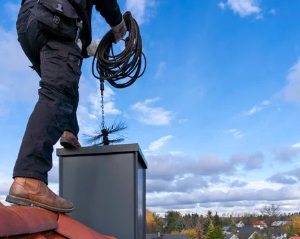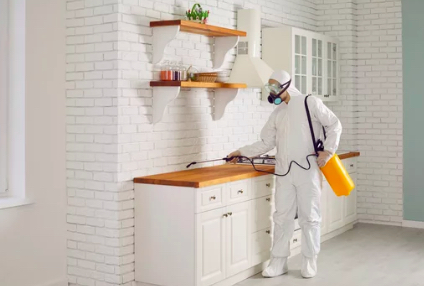Waxing Langley is a quick and effective way to remove unwanted hair. It leaves skin feeling smooth and luxurious.
It’s also a lot less painful than shaving. It involves using an appropriate wax formula, minimizing awkward positions, and following the proper removal technique.
First, the beautician cleans the area and applies a pre-wax treatment to prevent irritation. Then, they spread a thin layer of wax in the direction of hair growth and cover it with a cloth strip.
Unlike shaving, which can cause razor burn and irritation, waxing leaves your skin smooth and hair-free for weeks. It also helps reduce the growth of unwanted hair because it rips hair from its root. However, it is important to choose a reputable salon with experienced technicians and safe waxing products. It should have documented cleaning and maintenance procedures, and all equipment and applicators should be cleaned and disinfected between each client.
In the unlikely event that you experience a reaction to waxing, there are several ways to treat it. You can cool the area with a wet cloth or apply an over-the-counter pain reliever. If the irritation is severe, you should seek medical care. You can also apply an antibiotic ointment to keep the area moist and prevent infection.
Waxing can be painful, especially on sensitive areas like the bikini line or underarms. Some people may even have an allergic reaction to the wax. It is important to inform the technician if you have any allergies, such as a sensitivity to beeswax. They can suggest a gentler wax or an alternative.
A good tip to prepare for waxing is to avoid using any medications that can make your skin more sensitive. This includes over-the-counter acne treatments and some prescription medications, such as tretinoin. Also, do not expose the waxed area to heat, such as hot tubs and saunas. If you must, it’s best to wear loose-fitting clothing to minimize friction.
If you’re concerned about a possible allergic reaction to waxing, talk with your doctor or an esthetician before making an appointment. They can recommend a safe product and provide tips on how to prepare for the treatment.
It’s also a good idea to avoid consuming caffeine or alcohol before your appointment. These can increase the discomfort. You should also avoid going to the beach or a public pool until 48 hours after your wax. This is because the sun’s harsh rays can damage your newly-waxed skin. It’s also important to exfoliate the area regularly with a loofah or scrub to remove dead skin cells.
It’s effective
Waxing is an efficient and cost-effective way to remove unwanted hair from large areas of the body. It is also safe for most skin types and is especially effective on fine, coarse hair. Waxing does not irritate the skin and is less painful than shaving. In addition to removing unwanted hair, waxing exfoliates the skin, leaving it smooth and soft. Waxing is suitable for both men and women, and can be used to remove hair from the face or body.
Hair growth is reduced after each waxing treatment, and this effect can last up to six weeks. This is because the hair is removed from the root. Shaving, on the other hand, merely trims the hair at the skin surface.
Regular waxing can also reduce the growth of new hair by preventing the hair from reaching the skin’s surface. However, it is important to avoid waxing if you are taking oral retinoids or acitretin. These medications can cause the skin to rip during the waxing process and may leave scarring behind. If you are taking these medications, you should stop them for at least two to five days before your waxing appointment.
Ingrown hairs are a common problem caused by waxing, but they can be prevented by exfoliating before and after each treatment. This will reduce the likelihood of ingrown hairs, and make it easier for the wax to grip on the hairs. You should also avoid tight clothing, which can rub against the area and cause rashes or irritation.
Another common problem is folliculitis, which can cause red bumps on the skin after a wax. This is caused by bacterial infections in the damaged hair follicles, and can result in a boil or abscess. Fortunately, this condition can be treated with an antibiotic cream.
The best time to wax is in the anagen stage of hair growth, before the hair begins to grow out of the follicle. It is not recommended to wax during the catagen or telogen stages, as this can cause breakage of the hair follicle and may lead to ingrown hairs.
It’s quick
A waxing session usually lasts about an hour, depending on the area being treated. Before the waxing begins, the therapist will wash the skin and apply some lotion to reduce discomfort. Then, the hair is removed from the follicles using the cloth strip. This process removes hair from its roots, leaving the skin smooth and hairless. It is also a semi-permanent method of hair removal, meaning that the results can last much longer than shaving.
Shaving, on the other hand, removes the hair from the surface of the skin with a razor. This can be painful, and requires you to shave regularly in order to keep the hair at bay. In addition, it can cause stubble and ingrown hairs.
Waxing is a faster and more effective way to remove unwanted hair, especially on large areas of the body. In fact, it can be a lifesaver for busy people who are on the go. This is because the results of waxing can last up to six weeks, making it a more cost-effective solution than shaving.
The benefits of waxing are obvious: it is quicker than shaving and leaves the skin silky smooth. It can also be done on sensitive parts of the body, including the bikini line and the underarms. It is important to note, however, that the hair must grow out sufficiently before you can wax it. You should exfoliate the area before your waxing appointment to prevent ingrown hairs and irritated skin.
You should always use a high-quality waxing kit and a professional beauty therapist. This will ensure that the wax adheres to the hair correctly and that it is removed properly. It is also a good idea to test the temperature of the wax on your wrist before applying it to avoid burning or damaging the skin.
It is also a good idea to take an over-the-counter pain reliever like ibuprofen half an hour before you begin your waxing session. Also, do not wax the day before or during your menstrual cycle. It will be much more painful and you may experience an infection.
It’s convenient
One of the best things about waxing is that you can get rid of a lot of unwanted hair in just one session. It can also reduce the frequency of shaving and help thin out hair growth. Additionally, waxing doesn’t leave the skin feeling irritated like shaving does.
Shaving causes the skin to become itchy and can lead to razor burn or even hyperpigmentation in certain areas of the body. It also can lead to a dull and coarse appearance that can make you look older than you actually are.
Waxing, on the other hand, is a quick and convenient way to remove unwanted hair from the face, arms, legs, back, abdomen, and eyebrows. It is also much easier to do at home or with a professional esthetician than other hair removal techniques.
Despite the benefits of waxing, it’s important to take some precautions to prevent irritation or ingrown hairs after your appointment. For starters, be sure to exfoliate before your waxing treatment and moisturize afterward. Also, avoid using any abrasive scrubs or lotions on the area until after your wax. This will ensure that your skin is squeaky clean and will help prevent ingrown hairs.
Another way to minimize ingrown hairs is to shave in the direction that your hair grows. You should also use a good quality shaver and shaving cream, and never shave dry skin. Ingrown hairs can be very painful and unsightly, and they can also cause a lot of itching.
It is also a good idea to avoid tight clothing, hot tubs, and saunas after waxing. This will help prevent chaffing and sweating, which can cause irritation. Finally, it is a good idea to apply an SPF 30 or higher sunscreen to the treated area of the skin to protect against sunburn. In addition, it is a good idea to try out both shaving and waxing to see which method works best for you.



